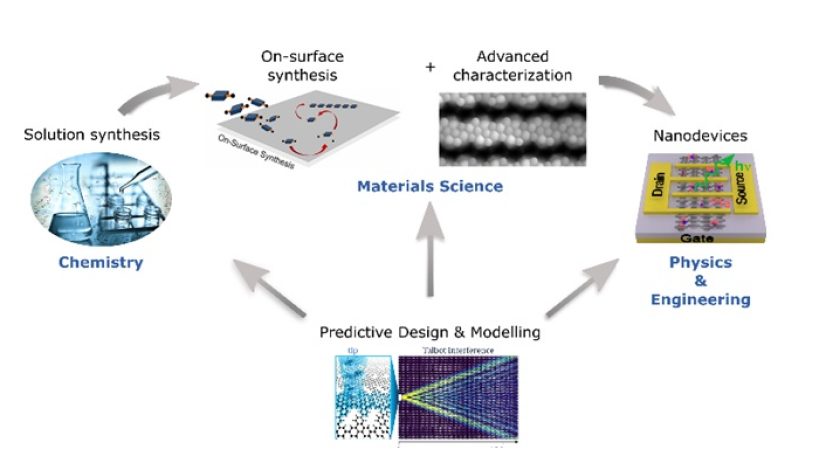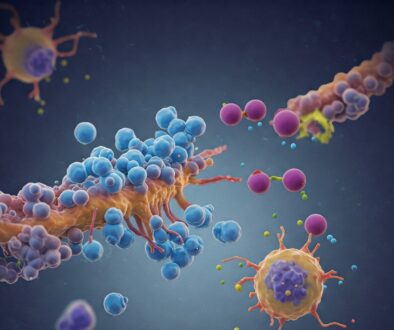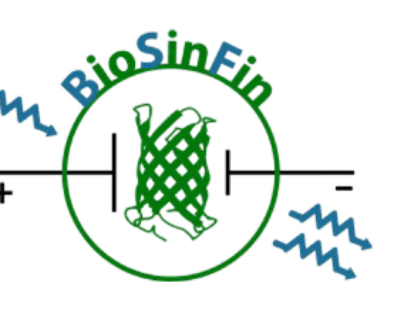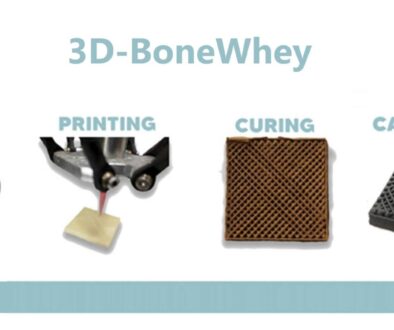Advanced strategies for the on-surface synthesis of molecular frameworks with electronic and magnetic functionalities
Abstract
The advancement of modern society is inextricably linked to the development and implementation of new materials and technologies that effectively address current societal, economic and environmental concerns. In recent years, tremendous progress has been made in the development of hybrid materials containing organic molecules, with potential applications ranging from quantum technologies to biomedicine. On-surface synthesis (OSS), a chemical technique in which appropriately designed reactants are dosed onto a surface that supports their covalent bonding, enables the growth of covalent molecular nanostructures (CMNs) with precisely defined structures. Moreover, the vacuum environment for the reactions and the 2D confinement enable the synthesis of CMNs not achievable by conventional means, opening the door to new functional materials.
While covalent homostructures have been used in the vast majority of OSS works to date, the synthesis of heterostructures formed by covalent organometallic hybrids will be a significant advancement offering new functionalities. We will therefore use coordination chemistry to incorporate transition metals into CMN frameworks. We will investigate a diverse set of metal ions, covalent linkers, and structural motifs, that allow us to tailor magnetic, electronic, and chemical properties. As a result, the pool of surface-applicable reactions will grow, as will our current understanding of reaction mechanisms. We will also broaden the range of potential molecular reactants by using alternative deposition methods such as electrospray ion beam (ES-IBD). Massive and/or delicate molecular precursors that cannot be sublimed will be deposited directly from solution onto surfaces under UHV conditions, allowing to explore novel molecular blocks as well as novel reaction mechanisms like mechanochemistry.
Keeing in mind particular functionalities and a potential device integration, we will explore methods to improve the alignment and extension of the 1D and 2D CMNs, as well as to stabilize chemically labile functional groups. One of the aimed functionalities is chemical sensing, whereby the CMNs interact with the target analytes. We will explore at the atomic level the interaction geometry and mechanism, as well as their impact on the electronic properties that ultimately allow them to be used as electric transducer in FET-based chemical sensors. Another target functionality is magnetism, with the particular goal of developing novel schemes to generate and address spin states on CMNs. One method for comprehending or forecasting the appearance of spin-polarized radicals in graphene nanostructures is based on topology. Aside from controlling the topological phase through varying bonding structures, we will also investigate more subtle ways to control it while maintaining the bonding network. Examples thereof are the activation of electron-phonon modes by varying CMN lengths, anisotropic electron potentials by chemical substituents along the ribbon, or metal-coordination. All of these factors can result in structural and electronic changes, as well as topological inversion that determine the appearance of spin-centers. Heterostructures that combine differently functionalized regions with different topology also develop spin polarised interface states, which will be studied in CMNs with multiple heterojunctions at varying distances. A reversible control of the spin states of CMNs will be further attempted through gating.
Project Details
Project code: PID2022-140845OB-C64
Duration: 2023-2026
Funding: 225.000,00 €
Funding Spanish Ministry of Science and Innovation





